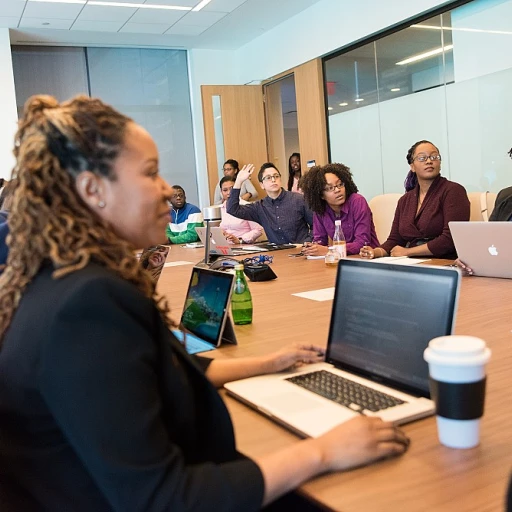
Understanding digital illustration and animation
What Makes Digital Illustration and Animation Unique?
Digital illustration and animation have transformed the way we experience visual content online. Unlike traditional methods, these digital practices use advanced software and hardware, allowing artists to create, edit, and animate visuals with precision and flexibility. This shift has made it possible to produce dynamic web experiences that capture attention and communicate ideas more effectively.
Core Concepts and Applications
At its core, digital illustration involves crafting images using digital tools, while animation brings these visuals to life through movement. These techniques are widely used in web design, advertising, branding, and interactive media. Their adaptability means they can be tailored to fit a brand’s identity or a project’s unique needs, making them essential for modern digital communication.
- Digital illustration creates static visuals for websites, social media, and marketing materials.
- Animation adds motion, enhancing storytelling and user engagement.
- Both disciplines rely on creativity, technical skill, and a deep understanding of visual language.
Why Visuals Matter in the Digital Space
Visual content is more than decoration. It guides users, conveys messages quickly, and builds emotional connections. In a crowded digital landscape, compelling illustrations and animations can set a website apart, making information memorable and engaging. According to advanced techniques for captivating visuals, integrating digital art strategically can significantly boost user interaction and brand recall.
Connecting to the Broader Digital Art Ecosystem
Understanding the fundamentals of digital illustration and animation is just the beginning. Mastery involves exploring the right tools, refining creative workflows, and overcoming industry challenges. As you progress, building a strong portfolio and seeking new opportunities become crucial steps in establishing a successful career in digital design.
Key tools and software for digital artists
Essential Software for Digital Illustration and Animation
Digital artists rely on a variety of tools to bring their creative visions to life. The choice of software often depends on the project’s requirements, the artist’s style, and the desired output. Here are some of the most widely used applications in the field:
- Adobe Creative Cloud Suite: Photoshop and Illustrator remain industry standards for digital illustration, offering extensive brush libraries, vector capabilities, and seamless integration with other design tools.
- Procreate: Popular among illustrators for its intuitive interface and powerful brush engine, Procreate is especially favored for tablet-based workflows.
- Clip Studio Paint: Known for its natural drawing feel and advanced features tailored to comic and manga artists, this software is also used for animation.
- Blender: For those venturing into 3D animation, Blender provides a robust, open-source platform for modeling, rigging, and rendering.
- Toon Boom Harmony: A professional choice for 2D animation, offering a comprehensive set of tools for frame-by-frame and rig-based animation.
Hardware and Accessories
Beyond software, hardware plays a crucial role in the digital art process. Many artists invest in graphic tablets, such as Wacom or Huion, which provide pressure sensitivity and precision. High-resolution monitors and color calibration tools help ensure visual consistency across devices.
Integrating Advanced Techniques
Modern digital illustration and animation often incorporate advanced techniques like layering, masking, and non-destructive editing. Mastering these methods not only streamlines the creative process but also enhances the quality of the final product. For those looking to deepen their expertise, exploring advanced techniques for captivating visuals can provide valuable insights and elevate your work.
Staying Up to Date
The landscape of digital illustration and animation is constantly evolving. Regularly updating your toolkit and learning new features ensures you remain competitive and can adapt to emerging trends. This adaptability is essential for building a strong portfolio and seizing new opportunities in the design industry.
Creative workflows and processes
From Sketch to Screen: Steps in the Digital Art Process
Digital illustration and animation thrive on structured yet flexible workflows. Artists often start with brainstorming and rough sketches, using digital tablets or drawing software to capture initial ideas. This stage is crucial for visualizing concepts and setting the tone for the project.
Layer Management and Iterative Refinement
Once the foundation is set, creators organize their work using layers. This approach allows for non-destructive editing and easy adjustments. Artists frequently revisit and refine their compositions, experimenting with color palettes, shading, and effects to achieve the desired look. Iterative feedback—either self-driven or from clients—plays a key role in this phase.
Animating with Precision
For animation, the process involves breaking down movements into keyframes and in-betweens. Timing, pacing, and smooth transitions are essential for engaging results. Digital animators rely on onion-skinning and timeline features to preview motion and make precise adjustments. Understanding how to display angles in Adobe Illustrator can be particularly useful when aligning elements or creating dynamic scenes.
Exporting and Optimization
After the creative work is complete, exporting files in the right formats ensures compatibility across platforms. Artists optimize images and animations for web performance, balancing quality and loading speed. This step is vital for delivering a seamless user experience, especially in interactive or responsive web environments.
- Brainstorm and sketch digitally
- Organize with layers for flexibility
- Refine through feedback and iteration
- Animate using keyframes and timelines
- Export and optimize for web delivery
Challenges faced by digital illustrators and animators
Common Obstacles in Digital Art Creation
Digital illustrators and animators encounter a unique set of challenges that can impact both their creative output and workflow efficiency. The rapid evolution of technology, combined with the demand for high-quality visuals, means professionals must constantly adapt to new tools and trends. Here are some of the most frequent hurdles faced in this field:
- Technical limitations: Even with advanced software and hardware, issues like software bugs, compatibility problems, or hardware constraints can disrupt the creative process. Staying updated with the latest versions and investing in reliable equipment is essential, but not always accessible to everyone.
- Creative block: Like all artists, digital creators sometimes struggle with inspiration. The pressure to deliver fresh, engaging content can lead to creative fatigue, especially when working on tight deadlines or repetitive projects.
- File management and data loss: Managing large files and complex project structures is a daily reality. Without proper backup systems, artists risk losing hours of work due to crashes or accidental deletions.
- Balancing originality and trends: The digital art world moves quickly, with trends shifting rapidly. Artists must find a balance between following popular styles and maintaining their unique voice, which is crucial for standing out in a crowded market.
- Client communication: Misunderstandings about project scope, feedback, or deliverables can lead to revisions and delays. Clear communication and well-defined briefs are vital to ensure that the final product meets expectations.
Staying Ahead in a Competitive Landscape
To overcome these obstacles, digital illustrators and animators often rely on continuous learning and adaptability. Mastering key tools and software, as discussed earlier, is only part of the equation. Building efficient workflows, seeking feedback from peers, and investing in professional development can help artists navigate the complexities of the industry. By understanding these challenges, individuals can better prepare for a successful and sustainable career in digital illustration and animation.
The role of digital art in modern design
Visual Storytelling in Digital Design
Digital illustration and animation have become central to how brands and creators communicate online. These visual mediums do more than just decorate a website or app—they tell stories, guide users, and create memorable experiences. By combining movement, color, and composition, digital artists can direct attention, evoke emotions, and reinforce brand identity.
Enhancing User Engagement
Modern design increasingly relies on digital art to capture and retain user interest. Animated elements can make interfaces feel more dynamic and interactive, while custom illustrations help differentiate a brand from competitors. According to recent industry research, websites and applications that integrate thoughtful animation and illustration see higher user engagement and longer session durations (source: Nielsen Norman Group).
Supporting Brand Consistency
Consistent use of digital illustration and animation across platforms helps reinforce a brand’s visual language. This consistency builds trust and recognition, making it easier for audiences to connect with the brand’s message. Digital artists often collaborate closely with marketing and product teams to ensure that every visual element aligns with the overall strategy and values of the organization.
- Illustrations clarify complex ideas, making information more accessible.
- Animations guide users through digital experiences, reducing confusion.
- Visual assets can be adapted for multiple channels, from social media to mobile apps.
Driving Innovation in Design Trends
The rapid evolution of digital tools has empowered artists to experiment with new styles and techniques. This innovation pushes the boundaries of what’s possible in web and product design, inspiring fresh approaches to storytelling and interaction. As a result, digital illustration and animation continue to shape the visual landscape of the internet, influencing everything from user interface design to advertising campaigns.
Building a portfolio and finding opportunities
Showcasing Your Work Effectively
Building a compelling portfolio is essential for digital illustrators and animators aiming to stand out in a competitive market. A well-organized portfolio not only highlights your technical skills but also demonstrates your creative process and versatility. When selecting pieces, focus on diversity—include examples that showcase different styles, techniques, and project types. This approach helps potential clients or employers understand your range and adaptability.
- Present both finished works and selected process stages to illustrate your workflow.
- Use high-resolution images and optimized videos to ensure your work is displayed at its best quality.
- Group similar projects together for clarity, making navigation intuitive for viewers.
Finding Opportunities in the Digital Art World
Once your portfolio is ready, the next step is to seek out opportunities. Digital illustrators and animators often find work through online platforms, creative agencies, and direct client outreach. Participating in design communities and sharing your work on social media can increase visibility and attract collaborations. Consider entering industry competitions or contributing to open-source projects to further expand your network and credibility.
- Regularly update your portfolio with recent projects to keep it relevant.
- Tailor your portfolio to specific roles or industries when applying for jobs or freelance gigs.
- Engage with feedback from peers and professionals to refine your presentation and skills.
Building a strong portfolio and actively seeking opportunities are crucial steps for anyone aiming to thrive in digital illustration and animation. By combining technical expertise, creative vision, and proactive networking, you can position yourself for ongoing success in the evolving landscape of modern design.








-large-teaser.webp)





